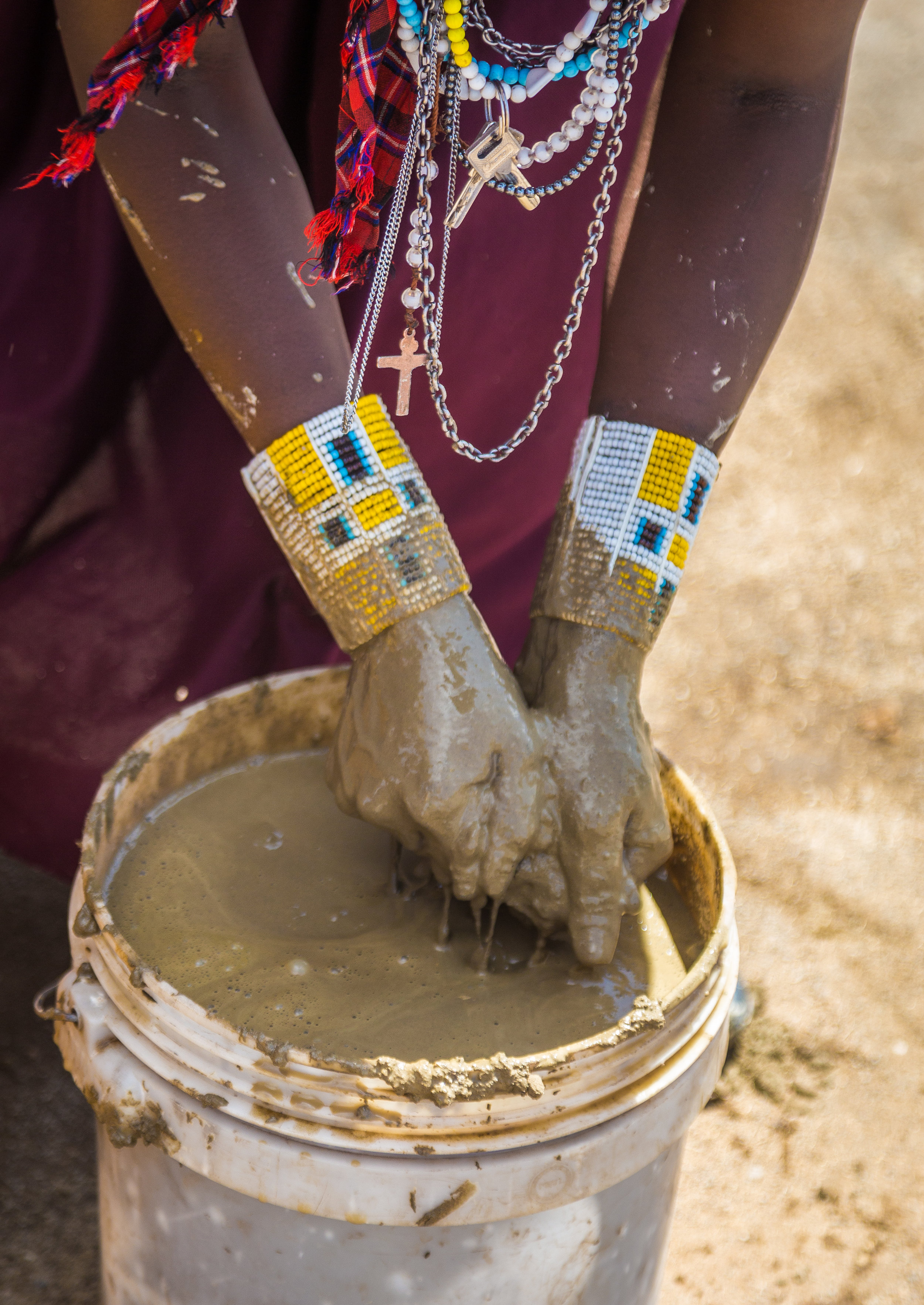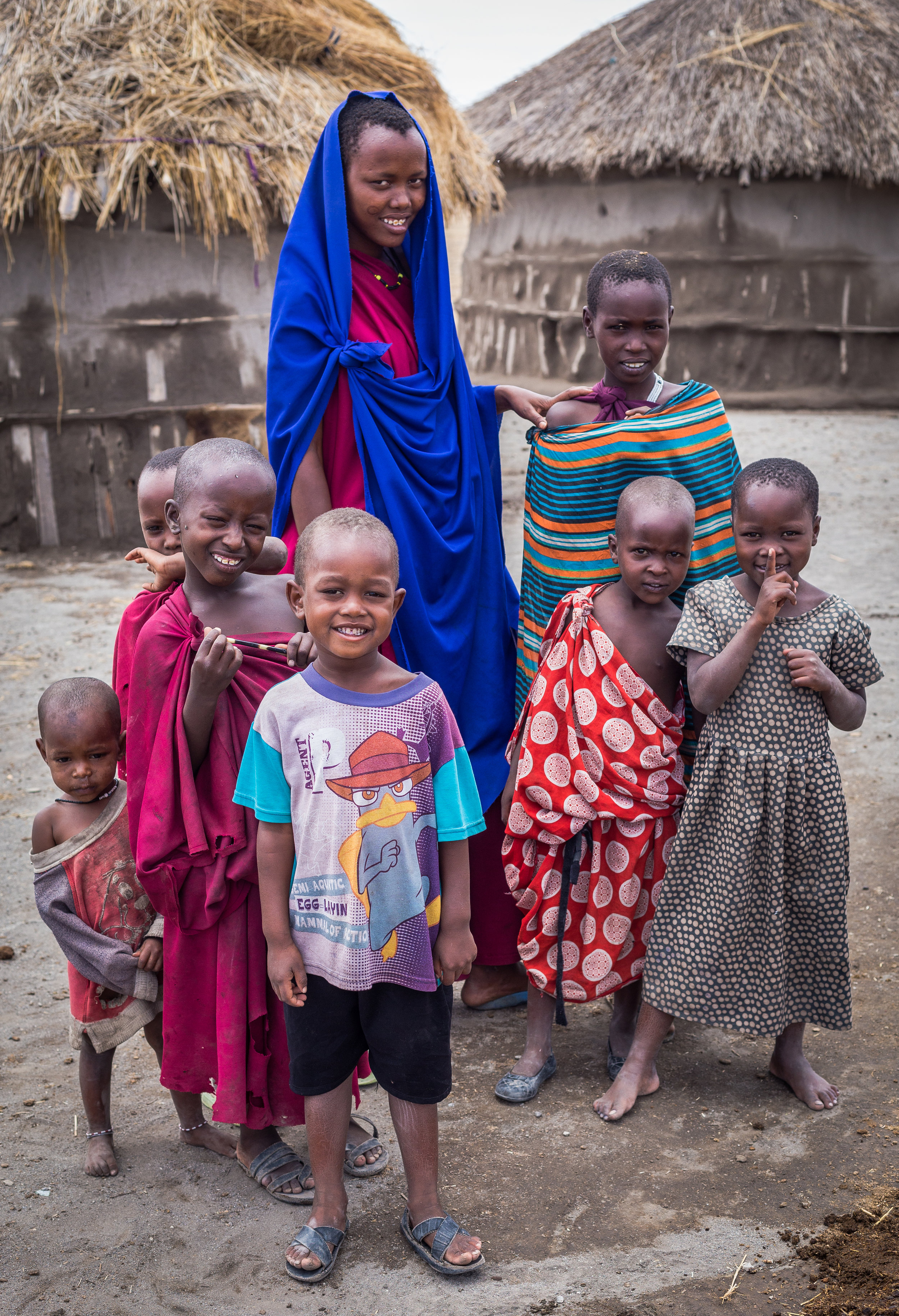Life as a Maasai
Anna walking to get some water outside her home.
Anna, a recent Form IV graduate of Mungere Secondary School, comes from rural Mungere village and is a part of the Maasai tribe. Anna is top of her class and especially has a passion for the science subjects. She dreams of being an optometrist when she finishes school. Her grandmother developed cataracts some years ago and because there is a lack of health facilities and education in the community, it was left untreated. Sadly, her grandmother is now permanently blind and relies on the younger children to walk her places around their village. This has fueled her passion for optometry. Anna allowed myself and a fellow colleague to follow her around for an afternoon, interview her about Maasai culture, and get a better idea of what it's like to live in a boma.
Anna's father passed away four years ago. In Maasai culture, when a husband passes, the community takes care of the widow and her family. In Anna's case, her uncle, locally known as 'Commando', took in Anna, her mother, and her siblings into his home. Anna has an older sister and three younger brothers. Her sister lives a kilometer away and left school/got married at 15. She is now twenty years old and raising two children (she's pictured below mixing the cow dung). Two of her younger brothers are in primary school and absolutely love school, her oldest brother, however, is 14 and dropped out of primary school. He instead prefers taking the cows and goats grazing throughout the day which is still a vital role and responsibility in the Maasai community as cows are essentially money.
Because Anna is Maasai, she lives in a housing complex which is known as a boma. A boma is a group of houses/huts that are comprised of wood and sealed with a mixture of cow dung and mud. The Maasai are traditionally polygamous and therefore, each wife has her own hut. When sons come of age and get circumcised, they too also get their own huts. Thus, there usually is a hut for the kitchen, one for the young cattle, and the others are for each wife, a widowed family member, a single circumcised son, or even just for storage. (pictured below).
Commando has two wives himself and also hosts Anna's mother. Additionally, the center of each boma has an area where the cows are kept at night. The mud chips away in the houses and it's important that at least once a month, the house is repaired and maintained to ensure its stability. To do this, cow dung is collected from the fields and any sort of water that can be found is mixed together. Although it is slightly odorous when mixing, the dried result is completely odorless. You can see the mixing and application process below.
The regular bomas don't typically have any sort of bathroom facilities so the Maasai typically find a spot near an acacia tree or a bush for privacy. As there is no water, water must be collected from government faucets/taps that are randomly placed in the area. Anna's family lives only about twenty minutes from a tap with clean water so family members must fill buckets a few times a week to ensure there is clean water for consumption. If the water is for something that won't be consumed, the water comes from puddles and manmade ponds that fill during rainy season. As for bathing, it's usually done via water buckets outside the bomas.
With modernity, some of the huts have solar panels and lights connected but generally speaking, most Maasai in our community use flashlights or fires at night to see. Furthermore, solar panels are now allowing some Maasai to charge their phones for free rather than in shops in town and economically make sense. Some huts are designed with holes in the roofs so that fires can be lit and mosquitos will be less inclined to feast on the residents of said boma.
As for currency, the Maasai tend to sell off cattle or goats at their weekly town markets when money is needed. Unless it's a special occasion, the Maasai won't often kill their own cows for consumption. Meals often consist of ugali (a staple food in East Africa that is made from boiled cornflower) and some sort of greens. Beans and corn are also often incorporated into their diets. More often than not, the Maasai have some sort of allotment that allows them to grow their own vegetables and sell the excess in the aforementioned markets.
From the many bomas I have visited, there are always a lot of children running around either from neighboring bomas or ones that live there. Because the men are polygamous, there are usually large families and many children. From what I've learned from my coworkers, the more modern Maasai men that living within the cities and towns don't often practice polygamy nearly as much as those living in the bomas and thus, families tend to be smaller. You'll see the youngest male children (from as young as 4) herding the cattle to the greenest areas and the female children are usually doing some chores around the boma if they're not in school.
The Maasai don't always speak Swahili because their mother tongue is called 'Maa'. Because of cultural and lingual similarities, the Maasai are extremely community-oriented. Males going from one boma to another isn't unusual and quite acceptable. Ceremonies or weddings usually bring together hundreds of Maasai from across the horizon and anybody from the community seems to be welcome, including us awkward foreigners.
It seems that ceremonies happen quite frequently. Circumcisions happen in 7 year periods - 7 years of circumcisions and then 7 years no circumcisions. I didn't have an opportunity to attend a circumcision ceremony first-hand but I did see boys walking around with white mud on their faces that signifies a recent circumcision. Weddings and generational changes (when warriors become elders) are a few examples of ceremonies that I have attended, however. From my observations, men are typically leading lines and jumping up and down while chanting in deep grunts and women are usually wearing intricate beaded jewelry and jumping on the outer edges of the ceremony. Unfortunately, the day that I attended a Maasai wedding was right after work and I didn't have my camera so a rather quality-lacking video was recorded on my phone.
In Anna's photos above, you can notice that she wears two pieces of cloth. These cloths are called shukas and although she's wearing a solid colored one, it's a lot more typical to see plaid or checkered shukas as you can see in some of the other photos above. Before colonialism, the Maasai traditionally wore skins (they are a warrior tribe after all) but the foreigners brought fabrics to Africa and the Maasai began wearing cloth. Apparently each color is supposed to signify something but I won't bother listing them since you can find allllll of the meanings here. Spoiler alert: red means blood and is supposed to be protection from wild animals. Some of my students actually gave a tutorial about how to wear a shuka which you can see from youtube below.
If you have any questions about my experiences or about the Maasai, please do leave a comment below.



















